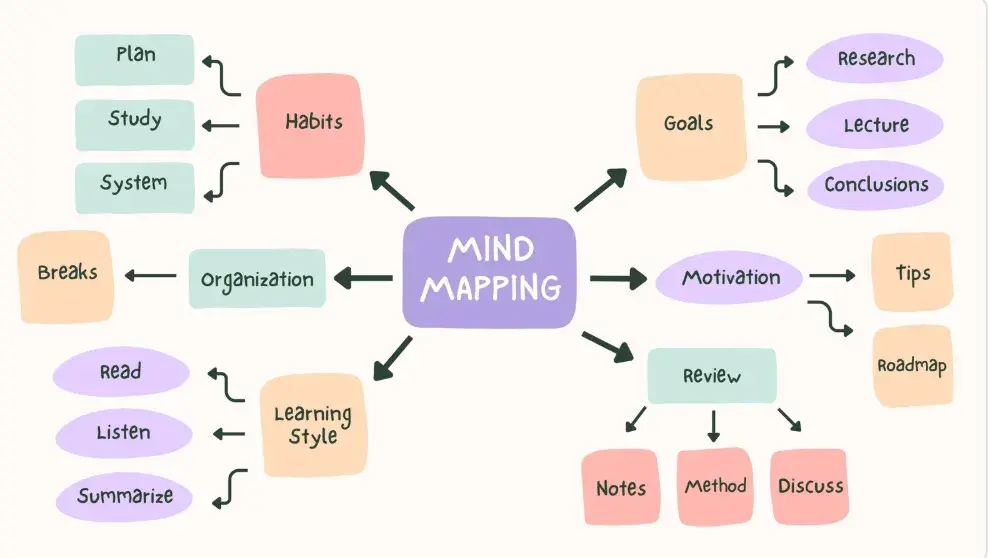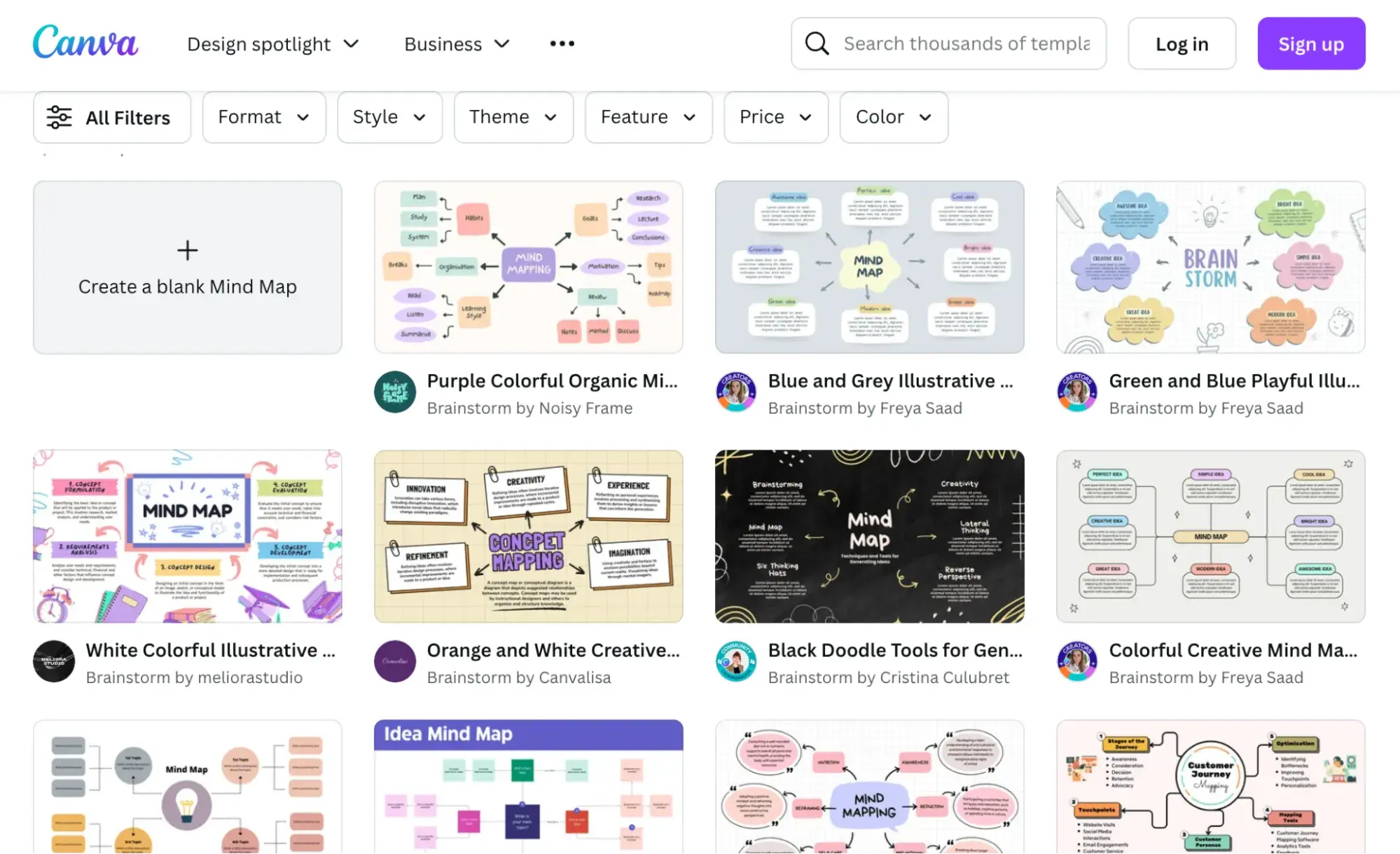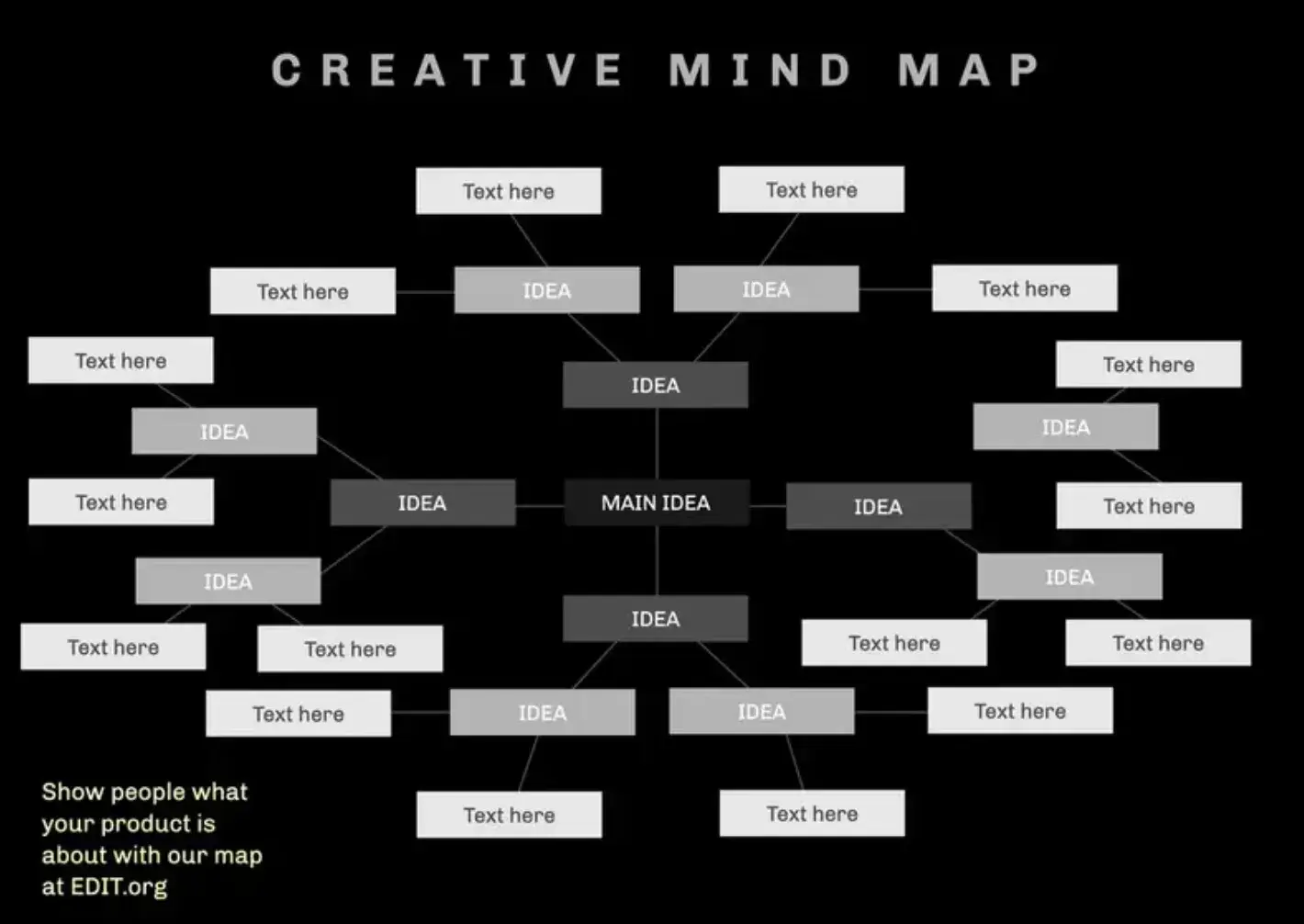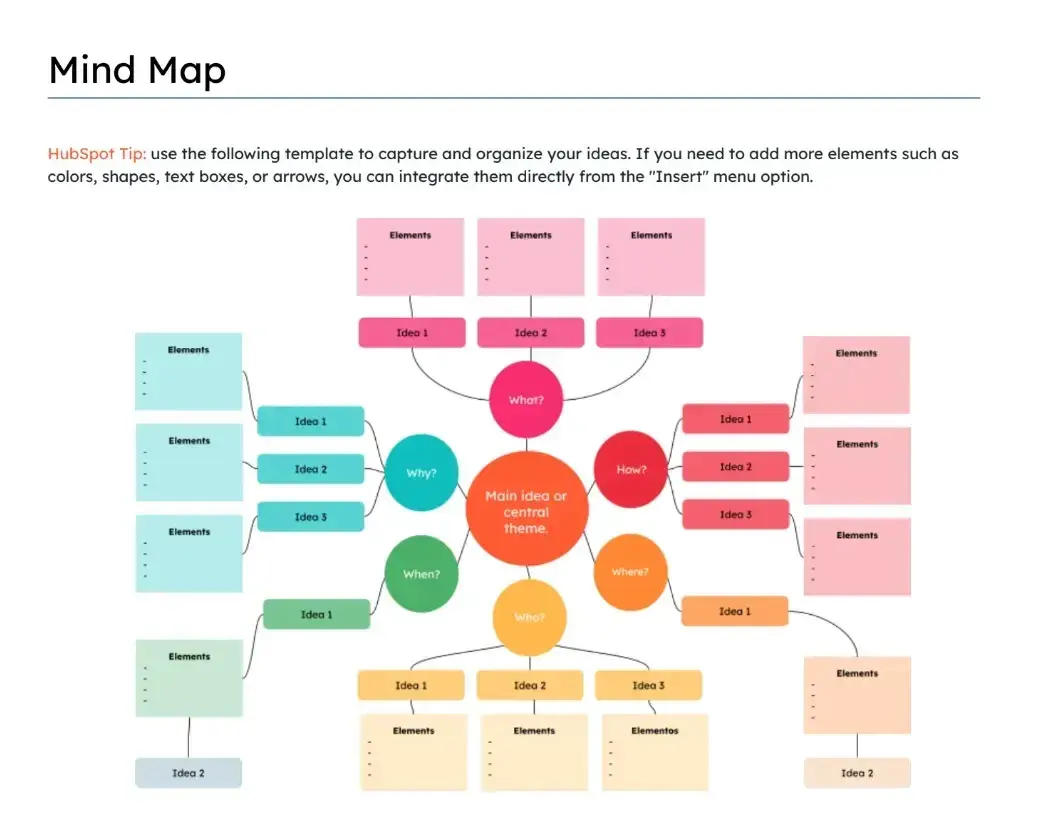Do you ever struggle to visualize your ideas or consolidate your thoughts in one place? I certainly did.

As a marketer, generating numerous ideas for campaigns, collateral and messaging is essential – yet managing them can be challenging without proper documentation.
Without a clear, organized visual for others to follow, communicating said ideas becomes even more difficult. That’s why creating a mind map is my solution to these challenges.
In this article, I’ll explain what a mind map is, how you can use it to articulate ideas more effectively, and provide you with a free template that you can use yourself.
Let’s dive in.
Content
What is a mind map?
A mind map is a visual diagram used to organize information, showing relationships between concepts branching out from a central idea.
Marketers commonly use mind maps as a strategic tool for researching and structuring marketing concepts such as identifying target audiences and campaign themes and enabling creative thinking and planning.
Often marketers refer to this type of planning as “mind mapping.”
What is Mind Mapping?
Mind mapping is the process of creating a mind map to visually organize information, ideas or concepts.
Now that I’ve covered the basics, let’s talk about the different reasons why you might want to build one of your own.
Use mind maps
1. Brainstorming and generating ideas
Mind maps help organize and visualize ideas during brainstorming sessions, allowing marketers and business owners to explore creative solutions and new opportunities – especially if they need to be shared with the team.
2. Strategic planning
They help structure business strategies by visually setting goals, objectives and action plans, aiding in clear communication and alignment.
3. Project management
Not only can this visual diagram help with ideation, but it can also help with project management. You can break projects down into manageable tasks or segments, dividing elements across timelines, all to facilitate better project tracking and management.
4. Content creation
For marketers, mind maps can outline and organize content ideas for blogs, SOCIAL MEDIA or marketing campaigns, ensuring coherence and consistency.
I’ve benefited from mind-mapping ideas for short-form content like TikToks or Reels to my own content.
For example, I would have a central idea of how to approach customer service representatives. I would create branches of different industries or situations that the reps would relate to or find funny.
Before I knew it, I had a map ten branches deep full of video ideas for waiters, flight attendants, bartenders and more.
5. Problem Solving
They provide a visual representation of problems and potential solutions, helping business owners and marketers analyze problems, identify root causes, and design effective strategies.
Pro tip: If you’re having trouble branching out to solve a problem, think about the outcome you want and work backwards! The solution may come down to imagining its ending instead of being too scared of the problem to start thinking ahead.
The applications of mind maps are practically endless, so let me walk you through the steps you need to take when making your own.
How to make a mind map
- Choose your mind map template.
- Identify your central idea.
- Separate the key topics.
- Add subtopics to your branches.
- Use keywords and images if necessary.
- Reorganize or re-prioritize if feelings change.
- Give your mind map a review.
- Clean up your mind map and give it a new look.
1. Choose your mind map template.
You’ll need a blank slate to start with, and it can’t just be a regular Google Doc or Word document to get the format right. Fortunately, there are plenty of them mind mapping software available to find the template of your choice.
Pro tip: Looking for inspiration? HubSpot has you covered! Download ours Mind map template for Word or Google Docs to effortlessly visualize your ideas on screen.
2. Identify your central idea.
Start by identifying the main theme or idea you want to explore and place it in the center of your map.
3. Separate the key topics.
From the central idea, draw branches outward to introduce key themes or categories related to the main theme.
4. Add subtopics to your branches.
For each branch, add smaller branches to include more detailed subtopics or related concepts.
5. Use keywords and images if needed.
Write key words or short phrases on each branch and optionally include pictures or symbols to make the map more visually appealing and easier to remember.
6. Reorganize or re-prioritize if feelings change.
Rearrange branches and subtopics to logically organize information and prioritize elements if necessary.
7. Review your mind map.
Review the mind map to make sure it covers all the necessary areas and expand it with additional ideas or connections as needed.
8. Clean up your mind map and give it a new look.
Now that all the hard work is said and done, refresh the look of your mind map with color coordination and style.
Use colors to differentiate branches, topics or categories for better visual clarity and understanding. If you want to see some examples of effective mind maps, keep reading for some examples that I think might get the job done.
Examples of mind maps
1. Canvas
I cannot recommend Canva highly enough as a marketer who visits the site almost daily. Its platform is intuitive and easy to use, regardless of your knowledge of image or map design.

The best part? Canva has over 3,000 mind map templates, meaning you can achieve the right look for your map in one place.

2. Edit.org
For those who want to keep their mind map simple, head over to edit.org for some clean and clear templates to organize your next ideas.

Pro tip: Don’t feel obligated to spend too much time on design elements if you’re trying to execute your ideas quickly. A clear mind map is infinitely more valuable than one made to be cluttered or overdone.
Start working on your next mind map
Mind mapping is a dynamic and effective tool that can transform the way marketers and business owners think, plan and implement their strategies.
Start incorporating mind maps into your workflow today to see what kind of innovation you bring to your next project or campaign.
https://blog.hubspot.com/marketing/what-is-mind-mapping

![Download Now: The Complete Guide to Collaboration at Work [Free Guide + Templates]](https://no-cache.hubspot.com/cta/default/53/7b7e92ee-1d6f-46e1-a984-3c0aa19eb448.png)



